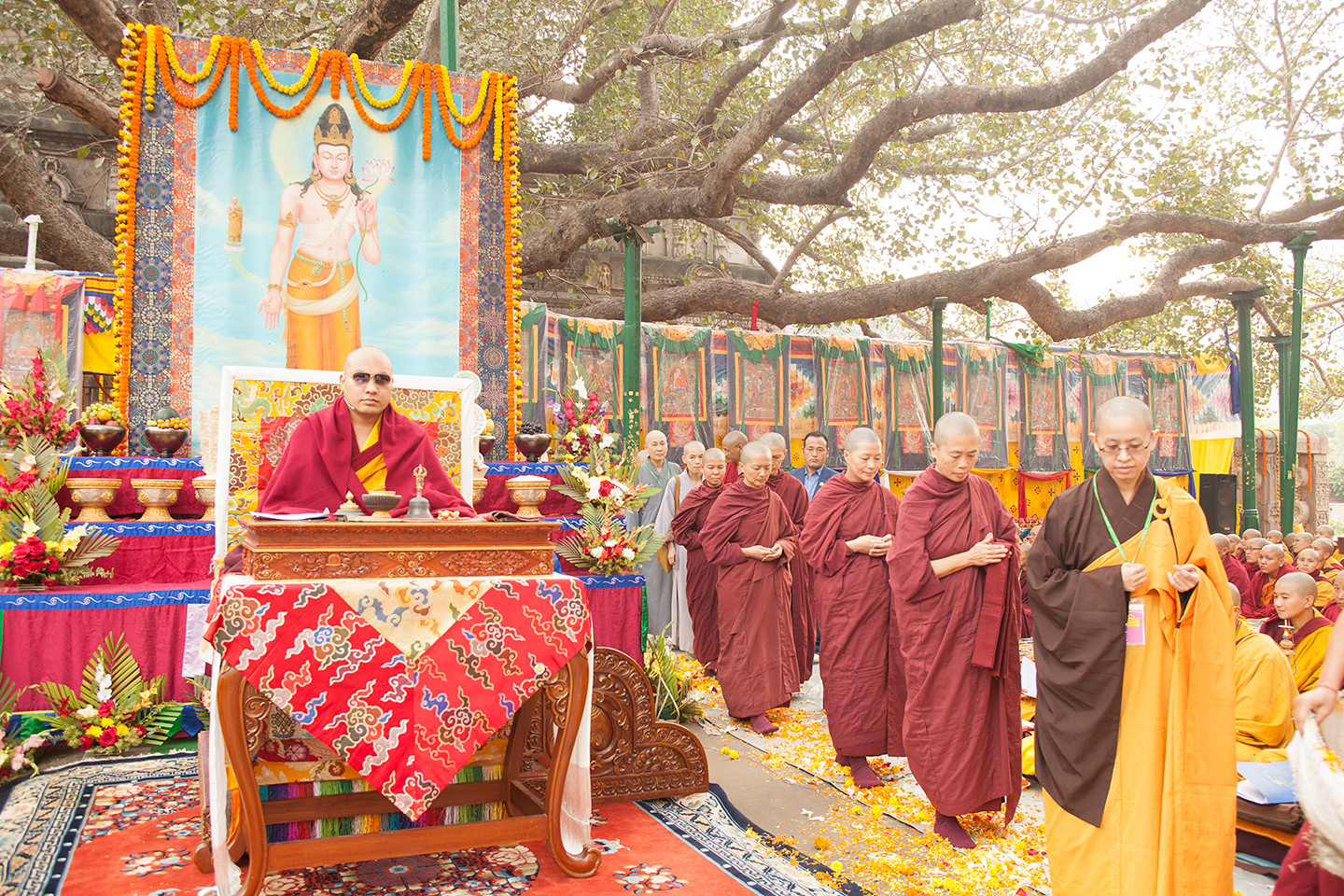Tergar Monastery, Bodh Gaya, Bihar, India • March 14, 2017 | Two days after the ceremony at the Mahabodhi Stupa, Karmapa elaborated on the background of the Ritual Practice for the Dharma to Flourish in Women’s and Especially Nuns’ Communities. He first mentioned The Sutra of Being Skilled in Means (‘Phags pa thabs la mkhas pa’i mdo), which discusses repaying kindness, and that it was translated from Sanskrit into Tibetan and Chinese. “In the Chinese translation,” the Karmapa observed, “there is a passage describing how Mahaprajnapati asked Ananda to request the Buddha to allow women to take vows. This is the circumstance that made it possible in Buddhism for women to go forth and become ordained.”
To express their gratitude to Ananda, it is said that on the spring and fall equinoxes, women should take the vows of the eightfold discipline and remember him. This eightfold discipline most probably refers to the eight precepts of the fasting vow (to avoid killing, stealing, sexual contact, lying, intoxicants, food after noon, sitting on a high throne or bed, and finally, wearing jewelry or perfume, and singing, dancing, or playing music). During the Ritual Practice, therefore, we take the mahayana sojong vows, which include all of these eight.
Usually during a fasting ritual, for example, the fasting practice of Gelongma Palmo, we engage in the practice through visualizing the eleven-faced Avalokiteshvara. There are fasting practices with other yidam deities, but the most well known involve Avalokiteshvara. In the Ritual Practice, we engage in a fasting practice, and primarily this means that we are taking mahayana sojong (restoration and fulfillment) vows. We visualize Avalokiteshvara and in his presence take these vows, after which he turns into Ananda.
The background for this transformation is a sadhana of the thousand-armed, thousand-eyed Avalokiteshvara, composed by Nagarjuna. Here, when it comes to taking the siddhis (accomplishments), in front of Avalokiteshvara is Ananda who is supplicated for whatever siddhi is sought and then received. So there’s a true connection between Avalokiteshvara and Ananda—some sutras even mention that Ananda is his emanation—and therefore, this transformation is incorporated into the Ritual Practice.
Another way of thinking about this is that Ananda showed great compassion in asking the Buddha numerous times to give women vows. Avalokiteshvara is the embodiment of all the buddhas’ compassion, and his turning into Ananda signifies Ananda’s compassion and loving kindness for all living beings and especially for women. Thus the Ritual Practice for the Dharma to Flourish in Women’s and Especially Nuns’ Communities is a way of bringing his generosity to mind.

















